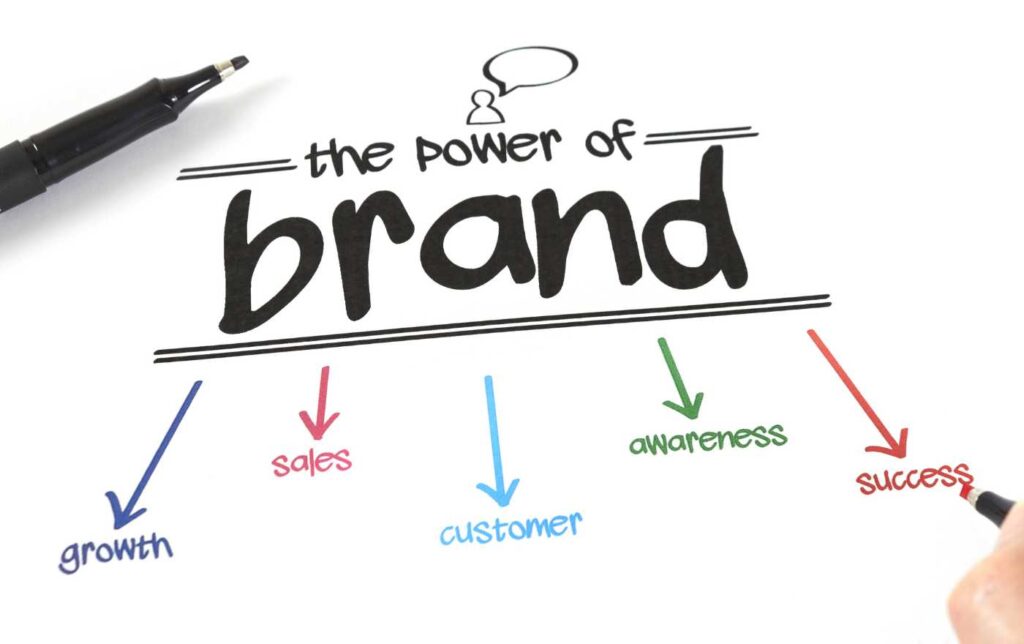Table of Contents
Introduction to Freelance Brand Strategy
A freelance brand strategist is an independent consultant who helps companies develop and execute branding strategies without being an employee. As defined by Dribbble, “Brand strategists are responsible for getting to know a brand from the inside-out. This includes dissecting the audience, understanding company goals, researching competitors, and defining values” (Source).

The day-to-day responsibilities of a freelance brand strategist typically include:
- Conducting market research and analysis on the client’s industry and competitors
- Identifying the client’s target audience and buyer personas
- Performing brand audits to evaluate the client’s existing branding and messaging
- Facilitating branding workshops and interviews with stakeholders
- Developing core brand strategy elements like mission, vision, values, positioning
- Creating visual brand identity assets like logos, color palettes, and graphic standards
- Producing written brand messaging like taglines, website copy, brochures
- Presenting brand strategy recommendations and implementation plans
- Project managing the rollout of new brand elements and guidelines
At the heart of freelancing is a question: How do you work best? Freelancing allows you to determine what that looks like for you.
– Paul Jarvis, an advocate for freelance work, highlights the customization and personalization of work routines and environments that freelancing offers.
Required Skills and Qualifications
To become a successful freelance brand strategist, you’ll need a mix of hard and soft skills. Some of the most important hard skills include:
- Market research and consumer insights – Strong research skills allow you to deeply understand your client’s target audience and market landscape (source).
- Creative and conceptual thinking – Coming up with innovative branding strategies requires creativity and big-picture thinking (source).
- Content and messaging – Crafting compelling brand messaging and content across platforms is key (source).
Essential soft skills include:
- Communication and presentation – You need to communicate ideas clearly to clients and stakeholders.
- Collaboration – Working closely with clients, creative teams and others is crucial.
- Project management – Juggling multiple projects calls for stellar organization.
Having a background in business, marketing or design is recommended. Relevant work experience in branding agencies or in-house marketing teams is also very valuable before going solo (source). Any experience executing successful branding initiatives for clients can demonstrate your capabilities.
Finding and Winning Clients
There are several ways for freelance brand strategists to find ideal clients. Some of the most effective options include:
Online job boards – Sites like Upwork, Fiverr, and Freelancer.com have clients posting projects. You can bid on relevant opportunities that match your skills and experience. However, there is lots of competition on these platforms so it can be hard to stand out (Source).
Networking – Attending industry events, conferences, and meetups is a great way to connect with potential clients in person. Come prepared with business cards and an elevator pitch. Follow up with new contacts and continue the conversation online (Source).
Referrals – Once you have a few satisfied clients, ask them to recommend you to others in their network. Referrals lead to some of the best new business since you come pre-vetted.
To win projects, respond promptly to client inquiries and submit well-written proposals that outline your approach. Showcase relevant case studies and testimonials. Be confident when discussing your fees. Ask smart questions to understand the client’s needs and challenges.

Following up persistently (but politely) can also help convert prospects into paying clients. Always aim to provide an amazing client experience so you earn repeat business and referrals.
Pricing and Income Potential
Freelance brand strategists typically charge hourly rates ranging from $50 to $200 per hour or more, according to Third. However, several factors can influence the rate for a freelance brand strategist:
- Experience level – More experienced strategists can command higher rates
- Expertise and specialty – Niche expertise may allow for premium pricing
- Client type and project – Larger clients and complex projects warrant higher rates
- Location – Rates may be higher in major metro markets
Beginner freelance brand strategists can expect to earn around $50-100 per hour, while very experienced strategists with niche expertise can charge $150-200+ per hour, according to Bonsai. Of course, rates are negotiable and will vary by client and project.
In terms of income potential, freelance brand strategists can expect to earn $50,000-150,000+ per year depending on their rate, hours worked, and ability to find consistent work. It’s important to set income goals and have a realistic view of how long it will take to build your business. Many freelancers start out part-time before transitioning to full-time solo work.
Pros and Cons of Going Solo
There are many advantages to working as a freelance brand strategist, with flexibility and freedom being some of the biggest pros according to experts (Source: LinkedIn). You can choose when and where you work, take on projects that interest you, and avoid office politics and commuting. However, the income variability can be a challenge, as can finding a steady stream of work (Flux Academy).
Some key pros of going solo as a brand strategist include:
- Flexible schedule and location
- Ability to choose ideal projects and clients
- More control over your work and life
- Avoiding office politics and commuting
- Potential for higher income once established
Potential cons to be aware of include:
- Unpredictable and irregular income streams
- No benefits like insurance, retirement plans, PTO
- Need to handle all admin tasks like accounting
- Can feel isolated without co-workers
- Harder to disconnect from work
However, many of the cons of freelancing can be overcome with the right strategies, mindset and support systems. Having an emergency fund, diversifying your client base, and taking breaks can help smooth income variability. Outsourcing admin work, and joining masterminds, and co-working spaces can help avoid isolation. With the freedom and flexibility, many find the pros outweigh the cons.
Embrace your independence and believe in your ability to become self-sufficient.
Miya Yamanouchi, Her quote encourages freelancers to trust in their own skills and capabilities, a crucial mindset for anyone venturing into the often uncertain world of freelance work.
Building Your Personal Brand
As a freelance brand strategist, having a strong personal brand is crucial for attracting clients and establishing credibility. According to Robin Waite, a business coach, “Your personal brand is your reputation – it’s what you’re known for and what you’re good at.”
Some key elements of a compelling personal brand include:
- Defining your niche and positioning – Focus on a niche like “brand strategy for tech startups” rather than being too general.
- Showcasing your experience and expertise – Highlight projects, credentials, testimonials etc. that back up your positioning.
- Crafting a professional online presence – Have a website, social media and profiles that convey your brand.
- Consistent messaging and visual identity – Reinforce who you are through logos, taglines, bios etc.
- Thought leadership content – Share insights through blogging, videos, talks etc. to build authority.
To market yourself effectively, leverage platforms like LinkedIn, Twitter, Medium and Quora to expand your reach. According to freelance writer Jeanne Grunert, “The importance of cultivating an online network through valuable content cannot be overstated.” Make sure to optimize profiles to highlight your brand and areas of expertise. Participate regularly by commenting, posting and engaging with your target audience.

Content marketing is also key for personal branding. As Grunert advises, “By blogging, vlogging, podcasting or publishing ebooks, you are demonstrating knowledge leadership in your field.” Dedicate time to regularly creating high-quality content that aligns with your brand positioning and helps attract ideal clients.
Let me know if you would like me to modify or expand this section further.
Managing Common Challenges
Freelance brand strategists face some unique challenges that can make growing a sustainable business difficult. Being aware of these challenges and having plans to address them is critical.
One major challenge is inconsistent work and income. Client projects often have natural ebbs and flows, with busy periods followed by slower times. This can make it hard to have a steady, predictable income (Source). Strategies like networking, lead generation, financial planning, and having an emergency fund can help smooth out the income rollercoaster.
Scope creep is another big issue, where clients make continuous small changes that lead to extra unpaid work. It’s essential to have well-defined scopes of work and change order processes (Source). Being proactive about project management and communication prevents scope creep.
Finally, getting paid on time is often a struggle, with clients delaying invoices. Having clear contracts, payment schedules, and follow-up processes helps (Source). With the right systems, freelance brand strategists can thrive despite the challenges.
Key Tools and Systems
As a freelance brand strategist, having the right tools and systems in place is crucial for managing your business efficiently and delivering great work to clients.

Here are some of the key tools to consider:
Project Management
Robust project management software like Asana or Monday can help you stay organized across multiple client projects. Features like task lists, calendars, file sharing, time tracking, and notifications ensure you hit deadlines and keep clients updated.
Productivity
Boost your productivity with tools like Trello for Kanban-style boards, Evernote for note-taking and organization, and RescueTime for understanding how you spend your time. Time management is essential when working independently.
Client CRM
Client relationship management (CRM) software centralizes your contacts, deals, projects, and communications. HubSpot CRM and Zoho CRM both offer free plans suitable for early-stage freelancers.
Accounting and Invoicing
Solutions like QuickBooks, Xero, and FreshBooks help you manage accounting, create professional invoices, accept payments, and generate financial reports. Many integrate directly with tax services too.
Delivering Results and Retention
As a freelance brand strategist, exceeding client expectations is crucial for getting referrals and repeat business. Here are some tips for delivering great results:
- Set clear objectives and KPIs at the start of a project so you and the client are aligned on what success looks like.
- Maintain regular communication to provide status updates and get feedback.
- Aim to over-deliver on your initial scope of work whenever possible.
- Present polished and visually compelling deliverables that bring strategy to life.
- Proactively make recommendations to take the work to the next level.
- Solicit honest feedback at the end of each project and look for ways to improve.
When juggling multiple clients, organization is key. Use project management tools to stay on top of deadlines and task lists. Block time on your calendar for deep strategic thinking. Automate and streamline repetitive tasks where possible.
To get referrals, nurture your network and ask satisfied clients to connect you with others who could benefit from your services. Offer a small finder’s fee for any referrals that become new business. Stay visible on social media and share case studies demonstrating your results.
According to a survey from LinkedIn, brand strategists who actively involve clients throughout the process tend to have higher retention rates. Keep clients engaged at every stage for lasting partnerships.
A Few Final Tips…
In conclusion, launching a successful freelance brand strategy career requires dedication, hard work, and persistence. While the flexibility and freedom are appealing, it takes time to build a steady client base and stream of work. Having the right mix of skills, experience, tools, and systems will help you deliver results for clients.
For those starting out, focus first on honing your expertise and developing a strong personal brand. Be patient – it takes time to gain momentum. Once established, strive to exceed expectations and get referrals to fuel growth. Block time for non-billable work like marketing and professional development. Learn to balance multiple clients and projects seamlessly.
The future of the freelancing economy is highly promising, driven by a range of factors including the rise of gig economy platforms, a shift toward remote work, and increasing demand for specialized skills. As businesses recognize the benefits of a flexible workforce, the global talent pool becomes more accessible, and legislative changes offer greater protection for freelancers, the sector is poised for significant growth. Additionally, a cultural shift towards valuing work-life balance and autonomy supports the appeal of freelancing as a viable long-term career path. Collectively, these trends suggest a robust expansion of the freelancing economy in the coming years.
Most importantly, stay passionate about the work itself. Freelance brand strategists get to make an impact while running their own business. With the right foundation, you can build both a thriving career and brand doing what you love.
If you want to connect and talk to experienced freelancers then reach them here. And if you liked this article you may also like 3 Ways to Achieve Greater Work-Life Balance in Freelancing




